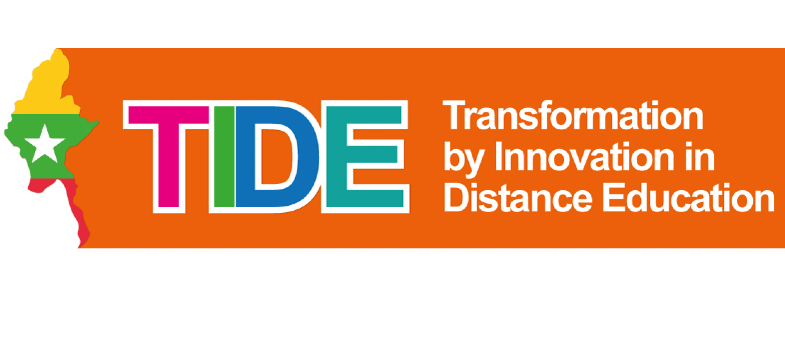What will I study in Step 4?
The table below lists the activities contained in this phase of the programme. It repeats the details on the type of activities involved, their learning outcomes, themes and their relationship to the programme learning outcomes. What follows are the individual assets that were used to support each of the named activities.
|
Part |
Activity name |
Activity type(s) |
Activity Learning Outcome(s) or Aims |
Academic Programme Learning Outcome(s) being addressed by this Activity |
Themes covered |
|
4.1 |
How to Make an Open Online Course (Online Course) |
1.Assimilative 2.Finding and Handling Information
|
After studying this course, you should be able to: Appreciate and feel confident in designing, structuring and producing an open online course. Recognise examples of good online course design, social learning and assessment. Understand the appropriate use of rich media to teach online and its associated learning. Find and reuse existing free materials in a course. Identify suitable platforms for publishing a course. Optimise a course for search engines.
A separate Q&A webinar was also held to support this activity. |
2. Understand what the principles and practices of openness in education means for you and your institution in developing and sharing educational resources. 4. Design and develop open educational resources (OER), whether online or in a physical form, that teach and assess learning outcomes
|
Learning Design; Distance Education |
|
4.2 |
OU Processes 3: Programme Development (Joint webinar) |
Assimilative |
This webinar aims to: * describe the main features of programmes * highlight the many internal and external influences on programme development * describe the quality assurance and enhancement processes used for programmes in the OU |
1. Explain the role of quality assurance and enhancement processes for providing a good quality distance learning experience for students |
Distance Education |
|
4.3 |
Finding and Evaluating OER (webinar) |
Assimilative |
By participating in this webinar you should be able to: Define what an OER is. Reinforce your understanding of open licenses. Understand where to find different OER. Evaluate different OER for you and your institution’s needs. |
2. Understand what the principles and practices of openness in education means for you and your institution in developing and sharing educational resources. 3. Evaluate the learning needs of students to help inform the design of teaching programmes. 4. Design and develop open educational resources (OER), whether online or in a physical form, that teach and assess learning outcomes
|
Open Education |
|
4.4 |
Engaging Students at a Distance: Social Media (webinar) |
Assimilative |
By participating in this webinar, you should be able to: Understand what social media is and what roles it might have for your institution. Understand how to use social media appropriately within an institutional context. |
1. Explain the role of quality assurance and enhancement processes for providing a good quality distance learning experience for students. 2.Understand what the principles and practices of openness in education means for you and your institution in developing and sharing educational resources
|
Open Technologies; Distance Education |
|
4.5 |
Inclusion and Accessibility in open online courses |
Assimilative |
By participating in this webinar, you should be able to: * Understand what accessibility and inclusion mean in different contexts; * Identify potential barriers to participating in online courses; * Understand how to support different types of students; * Understand how you might make different types of material (including OER) accessible and inclusive. |
1. Explain the role of quality assurance and enhancement processes for providing a good quality distance learning experience for students. 3. Evaluate the learning needs of students to help inform the design of teaching programmes.
|
Open Education; Distance Education; Learning Design |
|
4.6 |
Introduction to Assistive Technology |
Assimilative |
By participating in this webinar, you should be able to: * Understand what we mean by assistive technologies. * Be aware of, and be able to use, different assistive technologies. |
1. Explain the role of quality assurance and enhancement processes for providing a good quality distance learning experience for students. 3. Evaluate the learning needs of students to help inform the design of teaching programmes. |
Learning Design; Distance Education; Open Technologies |
|
4.7 |
Phase 2 OER Development activity |
1. Assimilative 2. Finding and handling information 3. Communication 4. Productive 5. Experiential |
After completing the Phase 2 activity you should be able to: 1. Identify opportunities to work with support staff in the production of online course content 2. Understand how to assess the learning needs of the students who will study your chosen online course. 3. Create a plan for how you might adapt the course for your students
|
1. Explain the role of quality assurance and enhancement processes for providing a good quality distance learning experience for students 2. Understand what the principles and practices of openness in education means for you and your institution in developing and sharing educational resources 3. Evaluate the learning needs of students to help inform the design of teaching programmes 4. Design and develop open educational resources (OER), whether online or in a physical form, that teach and assess learning outcomes |
Open Education; Distance Education; Learning Design |
